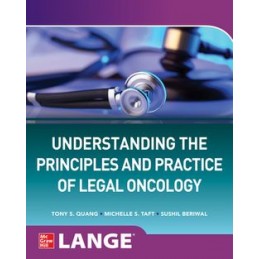- Reduced price

Order to parcel locker

easy pay


 Delivery policy
Delivery policy
Choose Paczkomat Inpost, Orlen Paczka, DHL, DPD or Poczta Polska. Click for more details
 Security policy
Security policy
Pay with a quick bank transfer, payment card or cash on delivery. Click for more details
 Return policy
Return policy
If you are a consumer, you can return the goods within 14 days. Click for more details
This authoritative handbook provides the information and insight you need to avoid common medico-legal pitfalls
Cancer care represents a significant portion of total U.S. health care spending. Mistakes come at great costs to the individual clinician and the entire healthcare system. One misstep can destroy an otherwise stellar medical career. Clinicians must be versed in the interface of law and medicine so that they can practice medicine more effectively and economically.
Understanding the Principles and Practice of Legal Oncology delivers expert advice on how to avoid lawsuits while at the same time contributing to the reduction of healthcare costs and improving patient access. Youll learn how to steer clear of the most common legal hazards and mitigate any anxiety over the need to perform additional workups and documentations. Packed with clinical vignettes and relevant legal principles, this is an essential resource for physicians, surgeons, nurses, researchers, medical physicists, technicians, and those who are in the business of taking care of patients.
Features
Data sheet
|
PART I
|
Legal Process in Cancer Care Malpractice |
PART I |
Introduction to Legal Oncology
| Gives clinicians a brief rationale of why this book was written and how it can be useful to them. | Chapter 1 | Medical Negligence
| Gives clinicians an overview of medical malpractice | Chapter 2 | Informed Consent
| Gives clinicians an overview of informed consent process; clinician vs. institutional liability |
